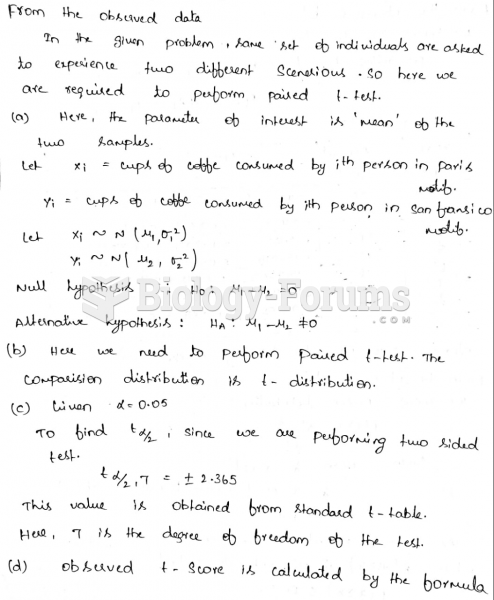|
|
|
Stevens-Johnson syndrome and Toxic Epidermal Necrolysis syndrome are life-threatening reactions that can result in death. Complications include permanent blindness, dry-eye syndrome, lung damage, photophobia, asthma, chronic obstructive pulmonary disease, permanent loss of nail beds, scarring of mucous membranes, arthritis, and chronic fatigue syndrome. Many patients' pores scar shut, causing them to retain heat.
After a vasectomy, it takes about 12 ejaculations to clear out sperm that were already beyond the blocked area.
Malaria was not eliminated in the United States until 1951. The term eliminated means that no new cases arise in a country for 3 years.
The immune system needs 9.5 hours of sleep in total darkness to recharge completely.
More than 150,000 Americans killed by cardiovascular disease are younger than the age of 65 years.







